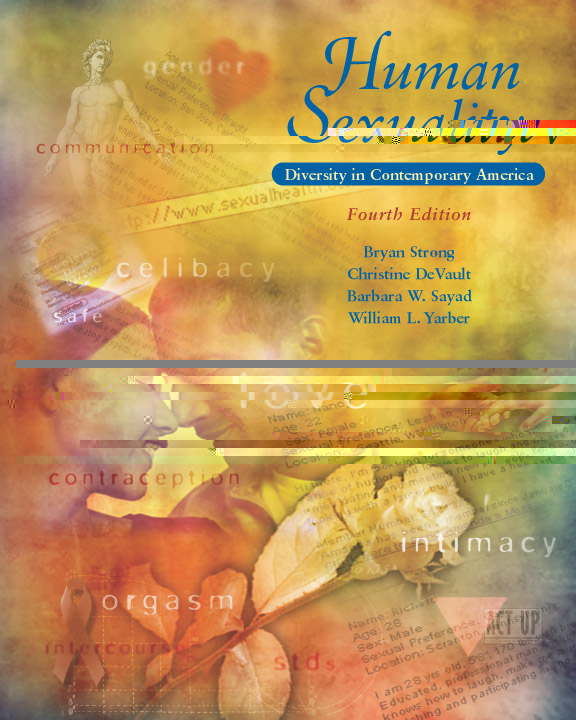 |  Human Sexuality: Diversity in Contemporary America, 4/e Brian Strong,
University of California, Santa Cruz
Barbara Werner Sayad,
California State University, Monterey Bay
Christine DeVault,
Cabrillo College
William Yarber,
Indiana University
Sexuality Over the Life Span
Learning ObjectivesAt the conclusion of Chapter 6, you should be able to:
1Discuss psychosexual development in infancy and childhood, including sexual curiosity, sex play, and masturbation, and the role of the family in teaching children about sexuality. |
 |  |  | 2Discuss current research on the "origins" of homosexuality. |
 |  |  | 3List and discuss physical changes during puberty for both girls and boys. |
 |  |  | 4Discuss influences on adolescent psychosexual development, including parents, peers, and the media. |
 |  |  | 5Describe special problems confronted by gay and lesbian adolescents. |
 |  |  | 6Discuss adolescent sexual learning, including masturbation, normative behavior sequence, virginity, and first intercourse. |
 |  |  | 7Discuss adolescent contraceptive use, including the roles of erotophobia, lack of information, risk taking, and role testing. |
 |  |  | 8Describe and critique contemporary sexuality education. |
 |  |  | 9Discuss teenage pregnancy, including causes and motivation and the characteristics and needs of teenage mothers and fathers. |
 |  |  | 10Describe the policy components for reducing adolescent pregnancy and HIV/STD infection. |
 |  |  | 11Discuss nonmarital sexuality, including its increasing acceptance and the factors leading to nonmarital sexual involvement. |
 |  |  | 12Describe the process of establishing a gay or lesbian identity and the different forms of bisexuality. |
 |  |  | 13Discuss the modern experience of being single, including the gay, lesbian, bisexual, and transgender community. |
 |  |  | 14Describe cohabitation among heterosexuals, gay men, and lesbians, including advantages and disadvantages and differences between heterosexual and gay/lesbian cohabitation. |
 |  |  | 15Discuss marital sexuality, including frequency of sexual interactions, the significance of sexual exclusivity, and reproductive legitimacy. |
 |  |  | 16Describe extrarelational involvements, including extrarelational relations in dating/cohabitating couples and extramarital relations in sexually exclusive and sexually nonexclusive marriages. |
 |  |  | 17Explain the effects of divorce on postdivorce individuals, single parents, and children, including the factors affecting nonmarital sex. |
 |  |  | 18Describe the stereotypes of aging, male/female and orientation difference in aging, and the significance of health and partner availability. |
|



 2002 McGraw-Hill Higher Education
2002 McGraw-Hill Higher Education